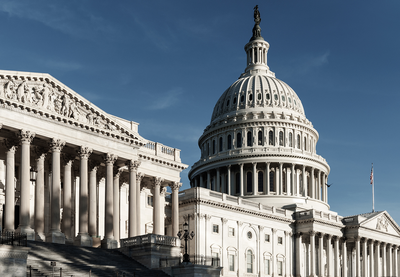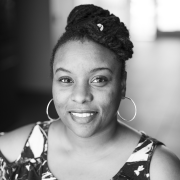Now that the second impeachment trial of former President Donald Trump is over, news about that procedure and the preceding events will start to dwindle. People will want to move on. But we owe it to students to continue these conversations.
Consider exploring broader themes—namely, the battle to uphold white supremacy and a focus on how those in power decide which citizens are allowed to express their grievances and how.
The January 6 event showed us that history repeats, as racial justice progress has never been linear. Some commentators viewed the violence in Washington, D.C., as white supremacy’s last stand or an attempt to take back control. However, white supremacy has never lost its footing in the United States. As much progress has been made to create a more just and inclusive society, white supremacy continues to be the foundation that has not yet been uprooted.
With each movement that aims to push the nation to adopt ideals it professes on paper, there has always been another movement immediately after to squash progress. Students must grasp this phenomenon—or this history will continue to repeat.
Connecting White Supremacy Violence of the Past to Today
It might have been jarring for students to witness a mob armed with Confederate flags and antisemitic symbols storm the Capitol, but that attack didn’t occur in a vacuum. Over centuries, U.S. history has shown us that violence occurs when white supremacy is threatened.
Students can connect what happened in January to other events throughout history. Explain that white mob violence was commonplace following Reconstruction, as formerly enslaved people took advantage of their voting rights to engage in the democratic process. While brutal violence occurred before Reconstruction, this new era brought out organized groups of white supremacists who fought for the “Lost Cause,” birthing the Ku Klux Klan and other terrorist groups.
For example, students will notice similarities between the attempted January 6 insurrection and the Wilmington Insurrection of 1898. That’s when an armed mob of 2,000 white men in North Carolina burned a Black-owned newspaper, overthrew the interracial city government and installed a white mayor and other officials. A historical marker explains the violence “[w]as part of a statewide political campaign based on calls for white supremacy and the exploitation of racial prejudice.”
While the recent riot at the U.S. Capitol was not successful, the event was motivated by the same ideas that motivated the deadly mob violence in 1898. Both campaigns, separated by 122 years, were rooted in misinformation and white supremacist resentment.
Students can review other events that demonstrate how white supremacists have reacted to a changing world: Red Summer—a response to prosperous Black communities and Black soldiers returning home from World War I—and the numerous massacres in communities such as Ocoee, Florida (1920), Tulsa, Oklahoma (1921) and Rosewood, Florida (1923).
More recently, we also saw how violent white mobs reacted to attempts to remove Confederate statues in Charlottesville, Virginia. As with the violence inflicted in years before, the effort to establish a more just and inclusive society—one that tells the truth about its history—was a trigger for white supremacists.
On Order and Civility
As you review how white supremacist violence repeats when society moves toward a diverse and participatory democracy for all, it’s also important to contrast how those in power respond to certain groups of people.
Students might name and discuss the language used to silence oppressed people as they express grievances. For example, you could show how calls for marginalized people to adhere to “law and order” or civility are mainstays throughout history, and this rhetoric shows up today, such as “All Lives Matter” or “Blue Lives Matter.”
However, we can distinguish rhetoric from fact. These phrases are codes used to sustain white supremacy. The fact is that this nation was founded on lawlessness and disorder. People who colonized what is now the United States massacred, enslaved and otherwise dehumanized Indigenous people and Africans. We have to acknowledge that this is our nation’s story. Yet, those responsible for that violence—then and now—continue to define what they deem is lawful and orderly.
Students can also contrast how government officials and law enforcement react to protests and demonstrations, depending on who the participants are. We’ve seen that oppressed groups are often described as dangers to national security when they demand that government respect their civil rights. The FBI’s targeting of Black activist groups is a prime example.
Students witnessed Black Lives Matter activists being met with tear gas, rubber bullets and other militarized tactics to suppress their grievances about state-sanctioned violence and racism in U.S. streets. In contrast, when white supremacists stormed and vandalized federal government spaces—as they did to disrupt the democratic process on January 6—students saw a slower, less forceful reaction.
Student discussions might steer toward the intent of people who protest. For example, Black Lives Matter supporters demanded more power and to live with dignity, while rioters at the Capitol violently attempted to assert the power of whiteness. Black Lives Matter protesters knew they were at risk of being punished for their protest, while members of the January 6 mob believed they would go unpunished because they saw themselves as entitled or privileged to that violence. They saw themselves as patriots.
That same disparity has occurred over time. For example, members of the Black Panther Party were heavily surveilled by federal agents and labeled extremists, much like Black Lives Matter activists are today. Meanwhile, law enforcement who killed Black Panther Party members or sabotaged the group from the inside insisted they were maintaining the existing social order. Similar histories abound for members of the Asian American, Red Power and Chicano movements.
Interrogate Curriculum
Students shouldn’t be the only ones learning from the January 6 insurrection. It’s not enough for educators to compare and contrast how white supremacy shows up in society. It’s just as imperative to name it as it occurs in school and disrupt it. Be mindful of how curricula or individual lessons inadvertently introduce students of all races and ethnicities to white supremacist ideals. Examine how texts center whiteness. For instance, interrogate curriculum that frames westward expansion in the 1850s as dangerous due to violent Indigenous people or describes it as “cultures colliding.” This narrative leaves out land theft, colonialism, massacres—and impunity for the generals who led them—and broken treaties.
While comparing and contrasting white supremacist movements to anti-racist movements is a clear focus for history, government and social studies classes, discussing how white supremacy manifests in our everyday lives can be woven into any curriculum.
For example, to humanize math, Marian Dingle and Cathery Yeh look at history through a mathematical lens and help students use math to find racial inequities in data and to approach community problems with justice in mind.
To dismantle white supremacy, we must learn from the past and disrupt how it manifests today. That’s why it’s critical to have the courage to teach hard history and help students make historical connections to the present.

